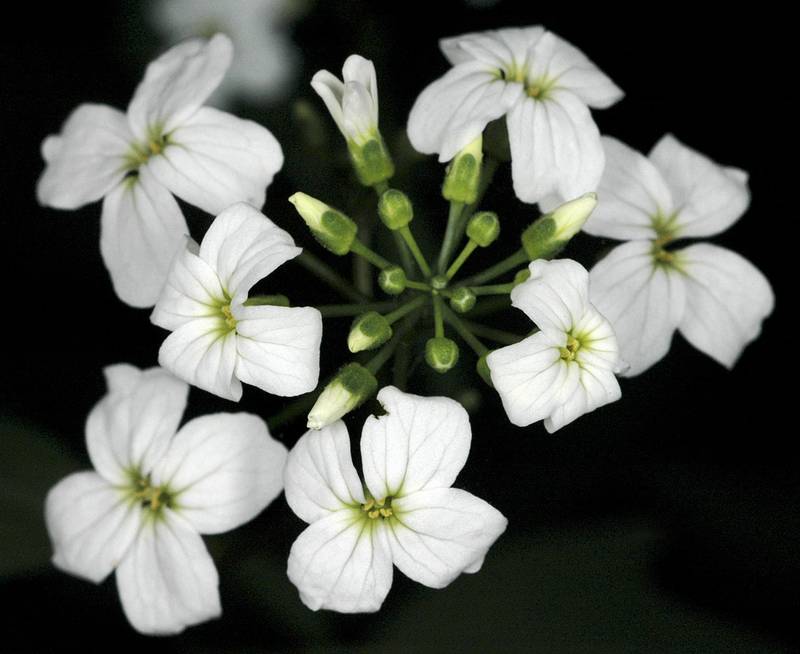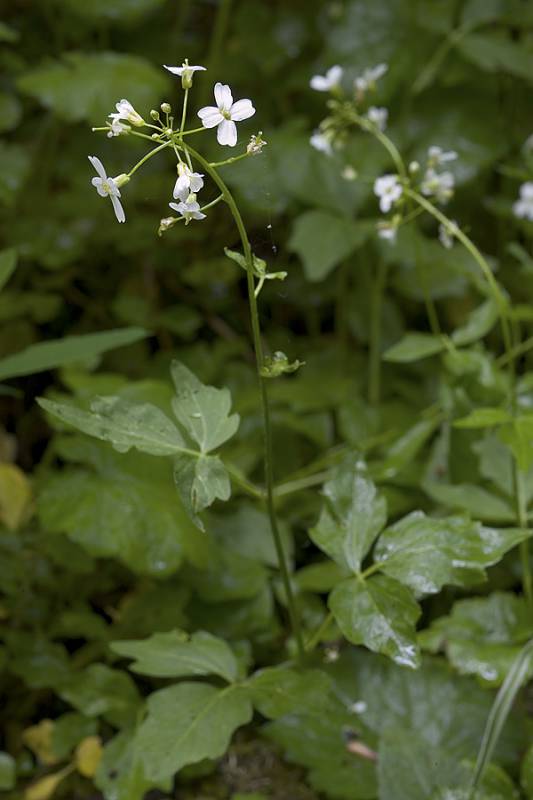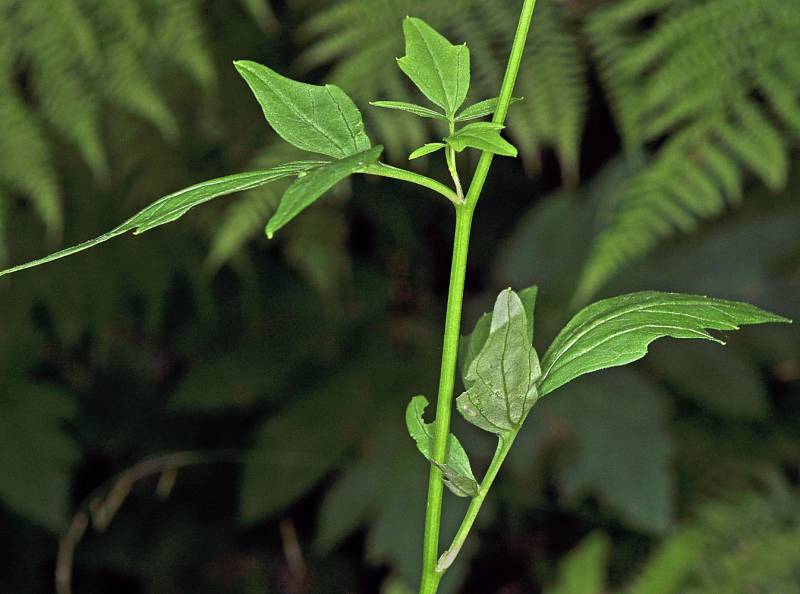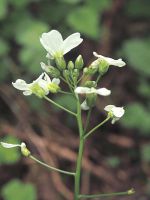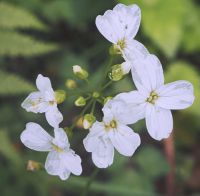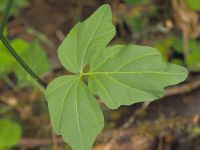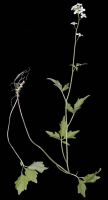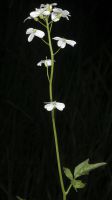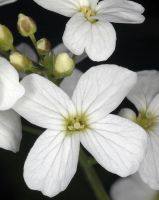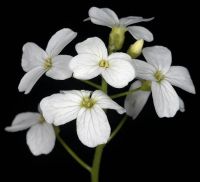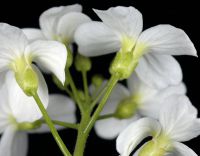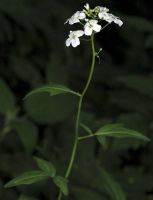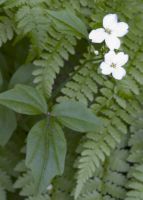Distribution: Occurring west of the Cascades crest in Washington; Alaska to northern California.
Habitat: Wet ground, especially along stream banks, often in deep woods.
Flowers: April-June
Origin: Native
Growth Duration: Perennial
Conservation Status: Not of concern
Pollination: Bees, flies
Perennial from spreading rhizomes, the simple stem 2-8 dm. tall, with stiff, simple hairs at least at the base.
Leaves mainly cauline, alternate, trifoliate, long-petiolate, the leaflets ovate to ovate-lanceolate, 1.5-7 cm. long, 3- to 5-lobed or toothed, short-petiolate, the terminal leaflet the largest.
Flowers in bractless racemes; pedicles ascending, 1-2 cm. long; sepals 4, oval, 2.5-3 mm. long, the outer pair saccate at the base; petals 4, white to pinkish, 8-13 mm. long, somewhat clawed; stamens 6; style 1.5-4 mm. long.
Siliques linear, erect, 2-4 cm. long and 2 mm. broad; seed in1 series.
Publication: Fl. Bor.-Amer. 1: 44. 1829.
Cardamine angulata Hook. var. hirsuta O.E. Schulz
Cardamine angulata Hook. var. pentaphylla O.E. Schulz
Dentaria grandiflora Raf.
PNW Herbaria: Specimen records of Cardamine angulata in the Consortium of Pacific Northwest Herbaria database
WA Flora Checklist: Cardamine angulata checklist entry
OregonFlora: Cardamine angulata information
E-Flora BC: Cardamine angulata atlas page
CalPhotos: Cardamine angulata photos

